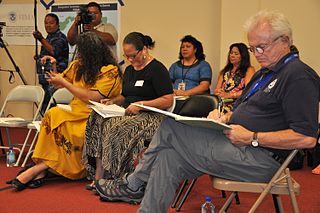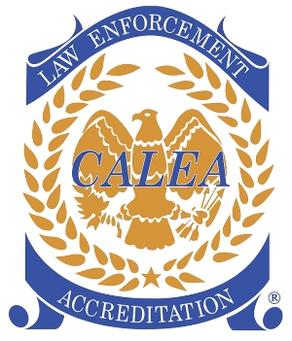
Public relations (PR) is the practice of managing and disseminating information from an individual or an organization to the public in order to influence their perception. Public relations and publicity differ in that PR is controlled internally, whereas publicity is not controlled and contributed by external parties. Public relations may include an organization or individual gaining exposure to their audiences using topics of public interest and news items that do not require direct payment. The exposure is mostly media-based, and this differentiates it from advertising as a form of marketing communications. Public relations aims to create or obtain coverage for clients for free, also known as earned media, rather than paying for marketing or advertising also known as paid media. But in the early 21st century, advertising is also a part of broader PR activities.
Digital Imaging and Communications in Medicine (DICOM) is a technical standard for the digital storage and transmission of medical images and related information. It includes a file format definition, which specifies the structure of a DICOM file, as well as a network communication protocol that uses TCP/IP to communicate between systems. The primary purpose of the standard is to facilitate communication between the software and hardware entities involved in medical imaging, especially those that are created by different manufacturers. Entities that utilize DICOM files include components of picture archiving and communication systems (PACS), such as imaging machines (modalities), radiological information systems (RIS), scanners, printers, computing servers, and networking hardware.
The ISO 14000 family of standards by the International Organization for Standardization (ISO) relate to environmental management that exists to help organizations (a) minimize how their operations negatively affect the environment ; (b) comply with applicable laws, regulations, and other environmentally oriented requirements; and (c) continually improve in the above.
Medical physics deals with the application of the concepts and methods of physics to the prevention, diagnosis and treatment of human diseases with a specific goal of improving human health and well-being. Since 2008, medical physics has been included as a health profession according to International Standard Classification of Occupation of the International Labour Organization.

The minister of health is the minister of the Crown in the Canadian Cabinet who is responsible for overseeing health-focused government agencies including Health Canada and the Public Health Agency of Canada, as well as enforcing the Canada Health Act, the law governing Canada's universal health care system.
Marketing communications refers to the use of different marketing channels and tools in combination. Marketing communication channels focus on how businesses communicate a message to its desired market, or the market in general. It is also in charge of the internal communications of the organization. Marketing communication tools include advertising, personal selling, direct marketing, sponsorship, communication, public relations, social media, customer journey and promotion.
An administrative law judge (ALJ) in the United States is a judge and trier of fact who both presides over trials and adjudicates claims or disputes involving administrative law. ALJs can administer oaths, take testimony, rule on questions of evidence, and make factual and legal determinations.
The Joint Commission is a United States-based nonprofit tax-exempt 501(c) organization that accredits more than 22,000 US health care organizations and programs. The international branch accredits medical services from around the world.

Advertising management is how a company carefully plans and controls its advertising to reach its ideal customers and convince them to buy.
A broadcast license is a type of spectrum license granting the licensee permission to use a portion of the radio frequency spectrum in a given geographical area for broadcasting purposes. The licenses generally include restrictions, which vary from band to band.

Amec Foster Wheeler plc was a British multinational consultancy, engineering and project management company headquartered in London, United Kingdom. In October 2017, it was acquired by Wood Group.
An industry analyst performs primary and secondary market research within an industry such as information technology, consulting or insurance. Analysts assess sector trends, create segment taxonomies, size markets, prepare forecasts, and develop industry models. Industry analysts usually work for research and advisory services firms, and some analysts also perform advisory (consulting) services. Typically, analysts specialize in a single segment or sub-segment, researching the broad development of the market rather than focusing on specific publicly traded companies, equities, investments, or associated financial opportunities as a financial analyst might.

The Commission on Accreditation for Law Enforcement Agencies, Inc. (CALEA) is a credentialing authority (accreditation), based in the United States, whose primary mission is to accredit public safety agencies, namely law enforcement agencies, training academies, communications centers, and campus public safety agencies.
Corporate communication(s) is a set of activities involved in managing and orchestrating all internal and external communications aimed at creating a favourable point of view among stakeholders on which the company depends. It is the messages issued by a corporate organization, body or institute to its audiences, such as employees, media, channel partners and the general public. Organizations aim to communicate the same message to all its stakeholders, to transmit coherence, credibility and ethics.
Internal control, as defined by accounting and auditing, is a process for assuring of an organization's objectives in operational effectiveness and efficiency, reliable financial reporting, and compliance with laws, regulations and policies. A broad concept, internal control involves everything that controls risks to an organization.
Metrica is a global media analysis, media evaluation and PR planning consultancy and is now part of the Gorkana group. Headquartered in London, the business was founded in 1993. The company works in the fields of reputation management, public relations measurement and content analysis. Metrica is part of The Gorkana Group, which incorporates Durrants, Gorkana and Metrica.
Marketing accountability is a term that signifies management with data that is understandable to the management of the enterprise. "Accountable Marketing" is another name that can be given to this process.

The Body of European Regulators for Electronic Communications (BEREC) is the body in which the regulators of the telecommunications markets in the European Union work together. Other participants include representatives of the European Commission, as well as telecommunication regulators from the member states of the EEA and of states that are in the process of joining the EU.
The International Association for Measurement and Evaluation of Communication is a UK-based global trade association for companies which provide social media measurement and traditional media measurement,evaluation and communication research.
The Barcelona Principles refers to the Barcelona Declaration of Research Principles, a set of seven voluntary guidelines established by the public relations (PR) industry to measure the efficiency of PR campaigns. They were the first overreaching framework for effective public relations and communications measurement. The Principles serve as a guide for practitioners to incorporate the ever-expanding media landscape into a transparent, reliable, and consistent framework.





